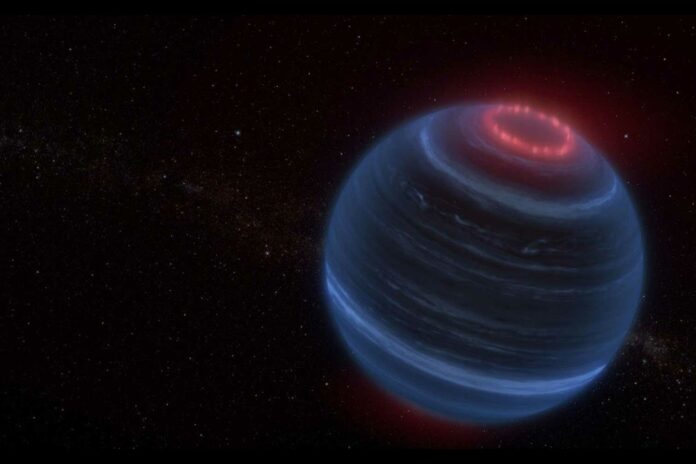Brown dwarfs, which are thousands of times more massive than planets but lighter than stars, are common in the solar neighborhood. Senior research scientist and senior education manager Jackie Faherty of the American Museum of Natural History headed a team of scientists last year that was granted time on JWST to study twelve brown dwarfs.
Astronomers have found methane emission on a brown dwarf planet, which is surprising for such a cold and remote world. The team used fresh data from the James Webb Space Telescope (JWST) for this discovery. The results imply that this brown dwarf may produce aurorae that resemble those on Earth, Jupiter, and Saturn.
The brown dwarf planet CWISEP J193518.59–154620.3 (or W1935 for short) is a cold brown dwarf located 47 light years away. Its surface temperature is about 400° Fahrenheit. Not much information is available about its mass, but astronomers believe that it ranges between six and 35 times the mass of Jupiter.
The team observed a number of brown dwarfs with JWST. They noticed that W1935 looked similar but with one striking exception: it was emitting methane. This is the first time astronomers have seen methane emission from a brown dwarf.
Faherty said, “Methane gas is expected in giant planets and brown dwarfs, but we usually see it absorbing light, not glowing. We were initially confused about what we were seeing but ultimately transformed into pure excitement at the discovery.”
When the team simulated the conditions, it revealed a surprise: The brown dwarf likely has a temperature inversion. In this phenomenon, the atmosphere gets warmer with increasing altitude. This phenomenon usually occurs in planets orbiting stars, but W1935 is isolated, with no apparent external heat source.
The team turned to our solar system to determine the source of extra-atmospheric heat. They specifically looked at studies of Jupiter and Saturn, which both show methane emissions and temperature inversions.
Aurorae is likely the cause of this feature in the solar system; hence, the team believes that they uncovered that same phenomenon on W1935.
High-energy solar particles that interact with Jupiter and Saturn’s magnetic fields and atmospheres, heating their upper layers, are known to be one of the main causes of aurorae on both planets. This is also the cause of the aurorae on Earth, often known as the Northern or Southern Lights, since they are most noticeable close to the poles. However, solar wind cannot account for W1935’s lack of a host star.
Our solar system has an alluring extra explanation for the aurora. There are active moons on Jupiter and Saturn that periodically eject material into space, interact with the planets, and improve those planets’ auroral features. The solar system’s most volcanically active moon is Jupiter’s Io, which shoots lava fountains up to dozens of miles into the air, and Saturn’s Enceladus, which shoots boiling and freezing water vapor out of its geysers as it approaches space.
Although more observations are required, scientists hypothesize that an active, undiscovered moon could be one reason for the aurora on W1935.
Faherty said, “Every time an astronomer points JWST at an object, there’s a chance of a new mind-blowing discovery. Methane emission was not on my radar when we started this project, but now that we know it can be there and the explanation for it is so enticing, I am constantly on the lookout for it. That’s part of how science moves forward.”
Journal Reference:
- Jacqueline Faherty et al., Methane emission from a cool brown dwarf, Nature (2024). DOI: 10.1038/s41586-024-07190-w
